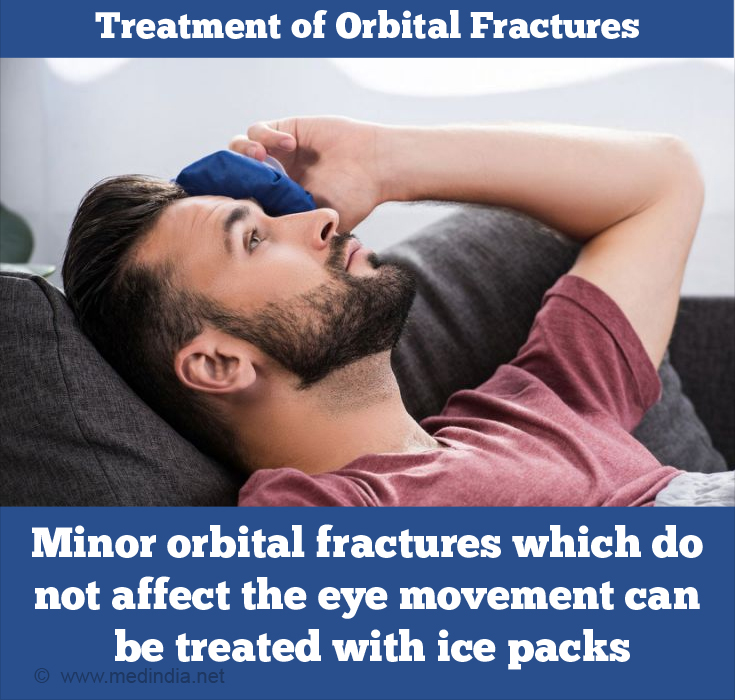How do you Diagnose Orbital Fractures?
Diagnosis of orbital fractures is primarily based on the following:
- Medical History: A detailed medical history of the patient is taken, including drug allergies and other ailments, which helps in treatment planning, especially for surgery
- Eye Examination: The injured eye and surrounding areas are thoroughly examined. The exam involves checking the vision (including retina), eye pressure, ocular motility, visual field, and pupillary response
- CT Scan: Computed tomography (CT) scan is a powerful imaging technique that uses a combination of X-rays and computer technology to produce horizontal or axial images in the form of “slices” of various structures in the body. CT scanning is the ‘Gold Standard’ for the diagnosis of orbital fractures and also helps in planning for surgery
How do you Treat Orbital Fractures?
Treatment of orbital fractures depends on the severity of the injuries and the symptoms experienced. Based on this, treatment may involve the following:
General Measures
- Head Elevation: Periorbital swelling due to edema can be reduced by keeping the head elevated
- Cold Compression: Ice/gel packs should be applied every 3-4 hours for the first 48 hours after the injury. This will reduce swelling and inflammation around the eye due to edema

- Avoiding Pressure on the Eye: Sneezing, blowing into the nose, air travel or deep-sea diving should be avoided. These activities force air from the sinonasal tract into the orbit, which can result in orbital compartment syndrome and even blindness
Medications
- Eye Ointment: This will ensure that the surface of the eye, especially the cornea, is protected from exposure, particularly if the eyelids don’t close fully
- Antibiotics: Antibiotics such as Cephalexin or Amoxicillin are usually prescribed as a prophylactic measure to reduce the chances of infection. Intravenous antibiotics like Cephalosporins and Fluoroquinolones are prescribed in case of severe infections
- Decongestants: Nasal decongestant sprays can be prescribed to ease the symptoms associated with swelling in the sinuses and nasolacrimal or tear duct
Surgery
The basic aim of surgery is to realign the bone surfaces and set them in their original position. Surgery may be performed immediately in case of severe trauma or delayed for up to 2 weeks in less severe cases, to allow for the swelling and bruising to resolve.
Indications for Surgery: Surgery is recommended in case of the following:
- Diplopia: If double vision does not resolve by itself or even after conservative treatment, surgical repair may be required
- Enophthalmos: If the eye remains sunken more than 2 mm below the surface, even after two weeks of the injury and is cosmetically unacceptable by the patient then surgery is the only option
- Nausea and Vomiting: These are signs of muscle entrapment within the fracture and are indicative of potentially serious complications, requiring emergency surgery
- Large Fractures: These can cause significant cosmetic deformity and/or functional disability, requiring surgical intervention
Surgical Implants: Implants are required for reconstructive surgery. The best implants are bone and cartilage from the same patient (autograft). Others include titanium meshes, porous polyethylene, and resorbable polymer sheeting (alloplast).






